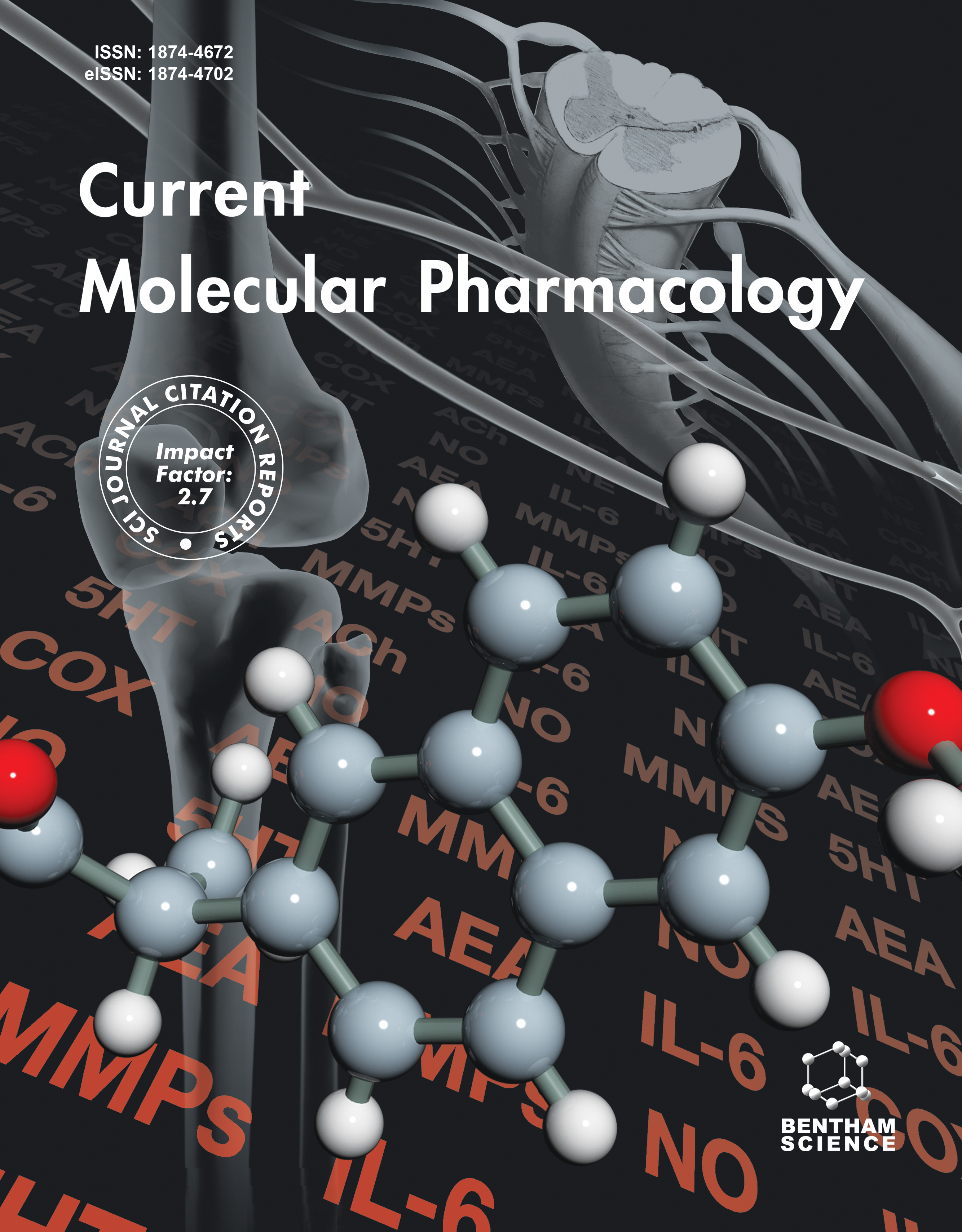- Home
- A-Z Publications
- Current Molecular Pharmacology
- Previous Issues
- Volume 1, Issue 3, 2008
Current Molecular Pharmacology - Volume 1, Issue 3, 2008
Volume 1, Issue 3, 2008
-
-
Neuropharmacology of the Olfactory Bulb
More LessAuthors: Simon O'Connor and Tim J.C. JacobThe olfactory bulb is located at the start of a hierarchical chain of sensory processing mechanisms. The relative ease of its isolation allows the possibility that models of these mechanisms might be integrated to develop a detailed understanding of function. In this sensory processing chain odour molecules evoke signal transduction in the olfactory receptor neurons. These signals represent the diverse range of molecular bin Read More
-
-
-
Hepatitis B Vaccination in HIV-Infected Subjects
More LessAuthors: Marco Bongiovanni and Maddalena CasanaSubjects at risk of infection with human immunodeficiency virus (HIV) are also at high risk of acute and chronic hepatitis B virus (HBV) infection. HIV is associated with higher HBV viraemia and with the risk of HBV reactivation, chronic active HBV infection, cirrhosis and death. Therefore, hepatitis B vaccination is recommended for all HIV-infected subjects lacking prior immunity. However, the immune response to hepatitis B vaccin Read More
-
-
-
Biologic Therapies Against Inflammatory Bowel Disease: A Dysregulated Immune System and the Cross Talk with Gastrointestinal Mucosa Hold the Key
More LessAuthors: Poonam Dharmani and Kris ChadeeInflammatory bowel disease (IBD) is a GI tract disorder that manifests as either Ulcerative colitis (UC) or Crohn's disease (CD). The precise etiology of IBD is still not completely elucidated but research into the immunopathogenesis of IBD suggests that dysfunctions of the intestinal immune system and cross-reactivity against host epithelial cells hold the key. In both UC and CD, polarized immune activity towards Th1 (marked Read More
-
-
-
Trends in the Exploration of Anticancer Targets and Strategies in Enhancing the Efficacy of Drug Targeting
More LessAuthors: F. Zhu, C. J. Zheng, L. Y. Han, B. Xie, J. Jia, X. Liu, M. T. Tammi, S. Y. Yang, Y. Q. Wei and Y. Z. ChenA number of therapeutic targets have been explored for developing anticancer drugs. Continuous efforts have been directed at the discovery of new targets as well as the improvement of therapeutic efficacy of agents directed at explored targets. There are 84 and 488 targets of marketed and investigational drugs for the treatment of cancer or cancer related illness. Analysis of these targets, particularly those of drugs in cli Read More
-
-
-
Polyphenols: Biological Activities, Molecular Targets, and the Effect of Methylation
More LessAuthors: K. R. Landis-Piwowar and Q. P. DouPolyphenolic compounds are widely distributed in the plant kingdom and the anticancer benefits obtained from their consumption have been studied extensively. However, polyphenols are subject to various biotransformation reactions within the human body including methylation. Likewise, naturally occurring polyphenols may contain O-methylations in place of the hydroxyls of the parent compounds. While some st Read More
-
-
-
Pharmacological Inhibition of the Bcl-2 Family of Apoptosis Regulators as Cancer Therapy
More LessAuthors: Alan Richardson and Stanley B. KayeConventional chemotherapy for cancer utilizes cytotoxic agents which elicit their therapeutic effect in part through the induction of apoptosis. In contrast, drugs which have been developed more recently and which are referred to as “targeted therapy” may exhibit less unwanted toxicity but in some cases these drugs are cytostatic. The recent development of drugs which target the apoptotic machinery offers a means to co Read More
-
-
-
TRPV1: On the Road to Pain Relief
More LessAuthors: Andres Jara-Oseguera, Sidney A. Simon and Tamara RosenbaumHistorically, drug research targeted to pain treatment has focused on trying to prevent the propagation of action potentials in the periphery from reaching the brain rather than pinpointing the molecular basis underlying the initial detection of the nociceptive stimulus: the receptor itself. This has now changed, given that many receptors of nociceptive stimuli have been identified and/or cloned. Transient Receptor Potential (TR Read More
-
-
-
Can Increased Food Intake Improve Psychosis? A Brief Review and Hypothesis
More LessAuthors: T. Treuer, J. Karagianis and V. P. HoffmannWeight gain, diabetes, and changes in serum lipid profiles have been reported during treatment with typical and atypical antipsychotics. An association between diabetes and psychotic disorders was described long before the introduction of pharmacological agents for the treatment of schizophrenia. Several theories have been proposed to explain the baseline weight increase and metabolic disturbances in schizophreni Read More
-
-
-
Functional Selectivity in Cannabinoid Signaling
More LessAuthors: E. V. Varga, T. Georgieva, S. Tumati, I. Alves, Z. Salamon, G. Tollin, H. I. Yamamura and W. R. RoeskeCannabinoid (CB) agonists exhibit numerous potentially useful pharmacological properties, but unwanted side effects limit their use in clinical practice. Thus, novel strategies are needed to identify potential CB pharmaceuticals with fewer side effects. Activated CB receptors initiate multiple parallel intracellular signal transduction cascades. In the present paper we will review experimental data indicating that structurally diffe Read More
-
Most Read This Month
Article
content/journals/cmp
Journal
10
5
false
en


